|
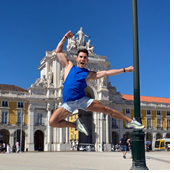 If you are dreaming of a trip to Portugal, we have the best suggestion for you with this fantastic 10-day gay group tour of Lisbon, Porto and surroundings. Lisbon and Porto are historic cities, full of stories to tell. Cities where you feel safe walking, day or night, with fantastic cuisine with unique flavors and friendly people. Lisbon is known as one of the most laid-back European capitals, making it a trendy city to visit. Built under 7 hills and with a fantastic position next to the Tejo River, it will make you create unique memories. If you are dreaming of a trip to Portugal, we have the best suggestion for you with this fantastic 10-day gay group tour of Lisbon, Porto and surroundings. Lisbon and Porto are historic cities, full of stories to tell. Cities where you feel safe walking, day or night, with fantastic cuisine with unique flavors and friendly people. Lisbon is known as one of the most laid-back European capitals, making it a trendy city to visit. Built under 7 hills and with a fantastic position next to the Tejo River, it will make you create unique memories.
And we have the fantastic Porto, with the richness of its artistic heritage, the Port wine, the Ribeira District and many historical sites not to be missed.

Close to Lisbon you will visit Sintra, a charming and romantic city where everyone is dazzled by the fantastic palaces and extravagant villas.
From Porto, you will also visit the Douro Valley (with wine tasting, of course!), Guimarães and its historic center a UNESCO World Heritage Site and also Braga, one of the oldest Christian cities in the world, with a visit to its cathedral and the historical center. They are in the Minho region, known for having some of the most beautiful natural landscapes in Portugal.
And to make these 10 days even more unforgettable, to the mandatory visits in these dream cities, we will bring together several unique experiences to make everything even more fun each day you're with us.
See all the tour details and you won't be able to resist joining us!
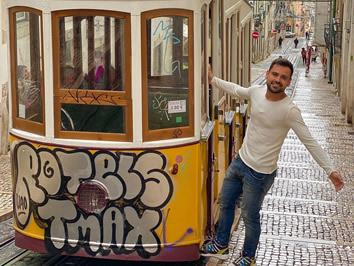
Day 1
“Olá” and welcome to this trip to the wonders of Portugal in Lisbon and Porto.
Our meeting point will be at the hotel in central Lisbon. As we don’t know your arrival details, we’ll be waiting for you here. If you’re flying into Lisbon Airport (LIS), a transfer will be arranged to bring you directly to us in comfort. We always recommend arriving as early as possible to make the most of your time.
On your first night we will have our first group dinner in a restaurant, to introduce ourselves/get to know and socialize.
Included: • Transfer from Lisbon airport • Welcome Gift • Group dinner (drinks not included) • 4* Hotel in Lisbon centre

Day 2
This morning, enjoy a fantastic breakfast before meeting a local guide who will show you the best of Lisbon.
Known as the city of 7 hills, bring comfortable shoes as we explore key sites like Bairro Alto, Chiado, Alfama, the S. Pedro de Alcântara viewpoint, Lisbon Cathedral, Praça do Comércio, and the Santa Justa Lift.
After the 3-4 hour tour, you’ll have free time for lunch and to explore. You can shop along the chic Avenida da Liberdade, visit optional sites like São Jorge Castle, Parque das Nações, Time Out Market, or Belém with its iconic landmarks. You can also take a ride on Tram 28 or visit the MAAT museum.
Included: • Breakfast • Tour in Lisbon with local guide • Optional tours (extra cost) • 4* Hotel in Lisbon centre
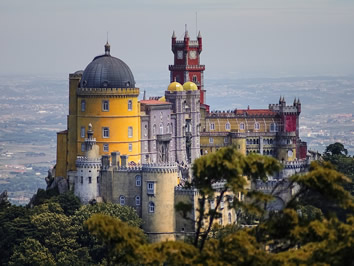
Day 3
After breakfast this morning, we’ll embark on a dream trip to Sintra!
We’ll meet our local guide and travel to this magical UNESCO World Heritage site, exploring the stunning Pena Palace and the historic Sintra National Palace, where you’ll learn about Portugal's rich history.
Sintra feels like a fairy tale come to life. We’ll also visit Cabo da Roca, the westernmost point of Europe, and enjoy breathtaking views of the Estoril Coast before heading to the charming village of Cascais. It promises to be a fantastic and unforgettable day.
In the late afternoon, we’ll return to Lisbon, leaving you the rest of the evening to relax and enjoy at your leisure.
Included: • Breakfast • Tour and transport with local guide to Sintra, Cabo da Roca and Cascais • 4* Hotel in Lisbon centre

Day 4
After a hearty breakfast and a more relaxed start following yesterday’s exploration, you’ll have the morning and lunchtime free to wander and visit the sights of your choice. We’re happy to offer plenty of suggestions!
But the adventure doesn’t stop there! In the afternoon, you’ll enjoy a wonderful sailing trip along the Tejo River, where you’ll experience Lisbon’s best views from the water.
After the boat ride, the rest of the day and evening are yours to enjoy.
Included: • Breakfast • Sailboat ride on the Tejo River • Transport to/from the tour start location, if applicable • 4* Hotel in Lisbon centre

Day 5
Today is our last full day in Lisbon, and we hope you’ve had unforgettable experiences!
The morning and afternoon are yours to explore at your own pace. Whether you want to shop on Avenida da Liberdade and Chiado or simply relax at a terrace, the choice is yours.
For optional visits, we can suggest:
- São Jorge Castle
- Parque das Nações, with the Lisbon Oceanarium and riverside walks
- Time Out Market Lisbon
- Tram 28 ride
- Belém area: Jerónimos Monastery, Belém Tower, and more
- MAAT Museum (10-min walk from Belém)
These attractions are easily accessible by transport or tuk-tuk.
In the late afternoon, we'll gather for a special dinner with a Portuguese cooking class, where you'll learn to prepare your own dish in a fun, group experience.
After dinner, enjoy your final night in Lisbon at your leisure!
Included: • Breakfast • Portuguese food Cooking Class • Transport to/from the cooking class start location, if applicable • Dinner • 4* Hotel in Lisbon centre
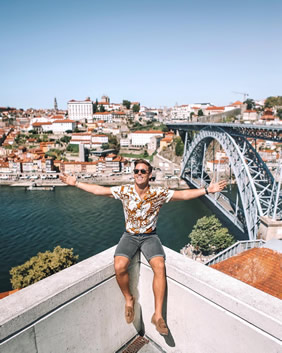
Day 6
Today, we say goodbye to Lisbon. After breakfast, we’ll have a transfer waiting to take us on a scenic 3-hour journey to Porto, in the north of Portugal.
Once you’ve settled into your hotel, you’ll embark on a guided tour to discover Porto’s rich culture and history. Explore medieval streets and visit iconic landmarks such as the Cathedral, Clérigos Church, and other historic monuments, spanning from the 12th to the 19th century.
By the end of the day, after falling in love with Porto, you’ll have the rest of the time free to enjoy the city at your own pace.
Included: • Breakfast • Transfer from Lisbon to Porto • Porto city walking tour with guide • 4* Hotel in Porto centre
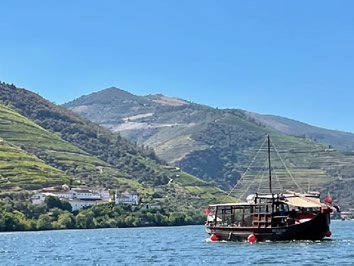
Day 7
After breakfast on your first full day in Porto, we’ll take you to experience the best of the Douro Valley.
Enjoy a day filled with wine tastings, local food, and a scenic river cruise through the heart of Douro. You’ll learn about the production of port wine, stroll through the vineyards, and savor some of the region’s finest wines.
Lunch will be served at a local restaurant, featuring traditional Portuguese dishes paired with DOC Douro wine.
Afterward, you’ll embark on a 1-hour river cruise aboard a traditional rabelo boat, once used to transport wine along the river.
The rest of the day and evening will be yours to enjoy at your leisure.
Included: • Breakfast • Douro Valley tour • Transport to and from Douro Valley • Wine tasting • Lunch • River cruise • 4* Hotel in Porto centre

Day 8
Today, we’ll dedicate the day to exploring Guimarães and Braga. After breakfast, a local guide will take us on a journey to discover these two incredible cities.
On this full-day tour of Minho, you’ll experience the charm of one of Portugal’s most underrated regions. In Guimarães, you’ll feel like you’ve stepped into a medieval setting. The historic center, enclosed by the city walls, played a key role in the formation of Portugal and is a UNESCO World Heritage site.
In Braga, you’ll visit the famous Bom Jesus Funicular and the Braga Cathedral, the country’s first cathedral, built long before Portugal was founded.
A delicious traditional Portuguese lunch is included, offering a taste of the region’s rich culinary heritage.
At the end of the day, we’ll return to Porto. The evening is free for you to enjoy as you please—whether that means a leisurely dinner or exploring Porto’s vibrant nightlife.
Included: • Breakfast • Tour to Guimarães and Braga • Transport to and from Guimarães/Braga • Lunch • 4* Hotel in Porto centre

Day 9
Today, you have the morning and lunchtime free to enjoy Porto at your own pace. After breakfast, take a leisurely stroll around the city, do some last-minute shopping, or simply relax
But we’ve got something special planned for the afternoon! You’ll embark on a relaxing and fun boat trip along the banks of the Douro River, offering a unique experience and stunning views.
As this is our last day together, we’ll gather for a final group dinner to reminisce about the unforgettable moments we’ve shared and maybe even start planning the next adventure. You’ll leave with new friendships and a treasure trove of memories.
Included: • Breakfast • Douro Sailing experience • Transport to and from the Sailing experience, if applicable • Farewell dinner (drinks not included) • 4* Hotel in Porto centre

Day 10
Today is the day to say goodbye. After breakfast we leave our hotel and each one will leave for their next destination or home.
If you need a transfer to the airport, or another location, let us know and if you want we can help. If you want to stay longer in Porto or other city and need help we can also help.
Included: • Breakfast

|